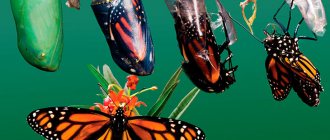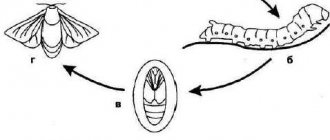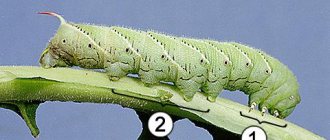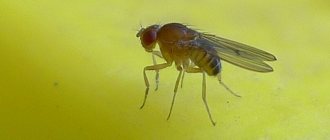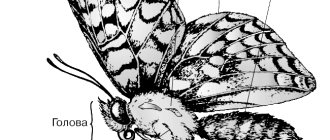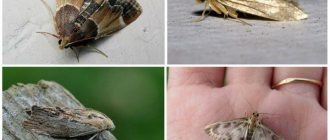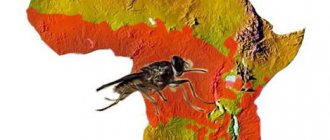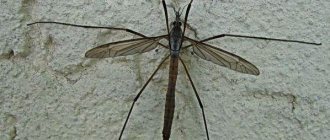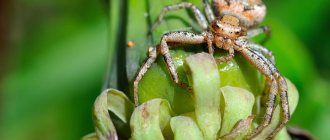Numerous orders of insects are conventionally divided into two groups. In representatives of the first group, the larvae emerging from the egg are similar to adult individuals and differ from them only in the absence of wings. These include cockroaches, grasshoppers, locusts, bedbugs, praying mantises, stick insects, etc. These are insects with incomplete transformation. In the second group, the eggs hatch into worm-like larvae, completely different from their parents, which then turn into pupae, and only after that do adult winged insects emerge from the pupae. This is the development cycle of insects with complete transformation. These include mosquitoes, bees, wasps, flies, fleas, beetles, caddis flies, and butterflies.
Types of butterfly eggs
Butterfly eggs come in various shapes - round, flattened, oval, spindle-shaped, smooth or with a cellular surface, covered with spines or ribs. The color of the eggs is also different, most often whitish, light green or yellow, in addition, brownish, brownish-violet, reddish. The eggs of many species change color as they develop.
The manner in which eggs are laid may differ among different species of butterflies. Eggs can be laid one at a time or several at a time, or in large groups, up to several hundred in one clutch. Eggs can be laid on leaves, stems, flowers, fruits of plants, in cracks in tree bark, on soil, lichens, and on dry plant remains. After laying, females of some species cover their eggs with hairs from their abdomen.
Where do caterpillars come from: the life cycle of butterflies
The female lays eggs after fertilization.
Under favorable conditions, a larva develops inside. The process takes from 2 to 14 days. Upon completion, they gnaw through the rim of the eggs and crawl out. This is how the caterpillar appears. The size of the first stage larvae is about 1 mm. They are born with a huge appetite, eat a lot, and grow quickly. As they grow older, they undergo an average of 4 molts, but there are species that are reborn up to 16 times. The duration of this cycle depends on the type of insect and habitat. In our area, females manage to give birth to two generations; the larva develops in about 6 weeks.
Caterpillars live under the bark of trees, in cereals, grains, and under the leaves of various plants. They feed on juices and gain strength. At the imago stage, the moth lives from several days to 20 days. During this time, it either does not eat anything or feeds on plant nectar, juices of berries, and fruits.
Interesting!
In northern latitudes, the larva does not have time to go through the full development cycle in one summer; it remains to winter in this form and continues to develop with the onset of warmer weather. Northern species are able to withstand frosts below -70 degrees Celsius. In Greenland and Canada, the transformation of a caterpillar into a butterfly lasts 7-14 years.
Finally, the larva forms a cocoon from independently produced threads and turns into a pupa. It clings to the tree and leaves with its paws and freezes. The most mysterious phenomenon begins - the transformation into a moth.
Life cycle of butterflies
Caterpillar structure
The body of caterpillars consists of thirteen segments, of which three are thoracic and ten are abdominal. The thoracic segments bear a pair of jointed legs; the abdominal segments usually have five pairs of false legs; some types of abdominal legs have two or three pairs, or they are underdeveloped. The appearance of caterpillars is very diverse and often differs even among closely related species.
Many are brightly and variegatedly colored, some have outgrowths in the form of horns, spikes, and bumps. The surface of the body is smooth with sparse scales or covered with dense hairs, warts, and spines. Body proportions also vary: some caterpillars are short and thick, others are thin and long.
When is it dangerous to help?
One day a man found a butterfly cocoon and took it home. He decided to observe the transformation process. The cocoon opened, and for several hours in a row this man observed the difficulties the butterfly had to go through in order to get out. She tried to get out through the small hole for quite a long time and suddenly the moment came when it seemed to him that the butterfly had given up and stopped fighting. It looked like she was stuck and completely motionless.
Taking pity on her, the man decided to help her and cut off the cocoon. Thanks to this, the butterfly got out of the cocoon, but its body was swollen like a caterpillar, its wings were small and unopened. The man expected her wings to strengthen and grow and her body to transform, but nothing else happened. The butterfly pitifully dragged its swollen body in a circle, now doomed to do this for the rest of its life.
Man, out of his kindness, did not understand that he had interfered with the natural process of nature. The efforts that the butterfly made were simply necessary for metamorphosis. Making its way through the narrow opening of the cocoon, the liquid from the butterfly's body would pass into the wings, making them large and strong for flight. By depriving the butterfly of its struggle, man doomed it to a miserable existence and deprived it of a wonderful future. Likewise, people become strong and successful and transform into a better image only when they go through certain difficulties and put in a lot of effort.
Sources:
https://www.lepidopterolog.ru/metamorf#:
https://www.krasnouhie.ru/zhiznennyj-cikl-babochek-metamorfoz-razvitie-babochki.html
https://www.danaida.ru/obsh/razm.htm
What do caterpillars eat?
Caterpillars of most butterfly species feed on green parts of plants - leaves, flowers, unripe fruits. Some develop inside branches and trunks, feed on wood, on lichens and dead parts of plants, on animal remains such as wool, down, feathers, and also on wax.
Some species are predatory, feeding on ant larvae and scale insects.
What can a butterfly do?
In appearance, this winged creature seems fragile and weak. However, entomological scientists know that some of the butterflies can make autumn flights over a length of... six thousand kilometers!
Others demonstrate exceptional endurance, living high in the mountains, in hot arid deserts, and in the tundra. And the “speed data” of the flyers is not bad at all.
Not long ago, a previously unknown species of butterfly with transparent, dragonfly-like wings, which is capable of reaching speeds of up to 30 km/h, was discovered in Cuba.
Share link
Transformation of a caterpillar into a butterfly - the pupa stage
Pupation is the most vulnerable process in the butterfly's development cycle, and most caterpillars prepare carefully for it. The pupal stage in different species can last from several days to several years. A long pause (stop in development) of pupae is an adaptation that allows the species to survive unfavorable years. If in the first year unsuitable conditions arise and the butterflies emerging from the pupae die, the population is replenished by previously diapausing pupae that emerge the next year.
The butterfly formed inside the pupal shell has very short, soft wings. When emerging from the pupa, it needs to climb onto some vertical surface in order to hang its wings, which will give them the opportunity to straighten. After which the wings gradually harden, and during this time the butterfly sits motionless.
Doll
To find out how butterflies are born, it is worth considering the processes that occur inside the pupa. The pupa is motionless and cannot escape from a predator, therefore this is the most defenseless stage in the life of a butterfly. That is why the dolls have such a variety of shapes and colors. They camouflage themselves with foliage and greenery. Some butterflies (such as silkworms) spin protective cocoons that provide additional protection.
With the help of the juice with which the caterpillar digests food, it liquefies its own body. The cells that are formed as a result of this process are called imaginal. They are able to change properties depending on the organ they are to become.
In most cases, the complete transformation from caterpillar to butterfly takes approximately two weeks. There are species in which this process can last for several years. The rate of development of the butterfly in the pupa depends on the external temperature and humidity. Some butterflies pupate before winter to survive the cold.
Butterfly structure
The butterfly's body consists of three sections - the head, thorax and abdomen, which contains internal organs.
The head bears antennae, palps, complex compound eyes and mouthparts. The vast majority of butterflies have mouthparts of the sucking type and are a thin long tube-proboscis, which is curled into a spiral when at rest. Many butterflies have underdeveloped mouthparts and are thus unable to feed, subsisting on energy reserves accumulated during the caterpillar stage.
The antennae of butterflies are an organ of smell and come in various shapes - filamentous, club-shaped, feathery, comb-shaped and others. The sense of smell of some butterflies is very developed; males of such species are able to detect the scent of a female at a considerable distance.
The chest of butterflies bears three pairs of jointed legs and two pairs of wings, while the females of some species have underdeveloped wings or are completely wingless, and in some species they are also legless. The pattern on the wings of butterflies is formed by the scales covering them, hence the scientific name of the order - Lepidoptera.
The benefits and harms of butterflies
The benefit or harm that butterflies bring largely depends on what stage of development the insects are at. Thus, the vast majority of caterpillars are pests that destroy both agricultural and wild plants. But adult butterflies participate in the pollination of many plants.
For reference! Many scientists are of the opinion that the role of butterflies in the pollination process is greatly exaggerated. When they drink nectar, they prefer not to get their paws dirty with pollen, which means they don’t transfer it to other plants.
Larvae and adult butterflies are food for birds and insectivorous animals. Some varieties of caterpillars feed on insect pests. Speaking about the benefits of butterflies, one cannot fail to mention the silkworm, which is used in the production of natural silk.
Well, of course, one cannot downplay the aesthetic significance of butterflies in human life. They help to understand and enjoy the beauty of nature.
Types of butterflies
The color of butterfly wings is varied. In some they are beautifully and brightly colored, while in others, on the contrary, they have a modest protective color, allowing them to be invisible on flowers and herbs, tree bark, stones, and lichens. Many species are characterized by sexual dimorphism, that is, a pronounced external difference between male and female in color, shape and size of wings, as well as in the structure of the antennae. Occasionally there are individual, atypically colored individuals called aberrants.
Gynandromorph butterflies, that is, individuals that combine the characteristics of a male and a female, are extremely rare. Gynandromorphs of species that are characterized by pronounced sexual dimorphism look very unusual. In this case, on one side of the butterfly’s body there are wings with the color of the male, and on the other - with the color of the female.
Most butterflies are active at dusk and at night, with a much smaller number of species active during the day. However, it is the diurnal butterflies that are the most visible, and, as a result, the best studied. Many butterflies are good flyers; some species are characterized by regular migrations, which often leads to their wide distribution. Others, on the contrary, inhabit only small geographical regions; such species are called endemic.
Magic inside the cocoon: how the wings of a future butterfly are formed
During their existence, many organisms undergo a number of changes, physiological, biochemical, structural, etc. Depending on the type, changes can be either minor or radical. Speaking about the latter, the first thing that comes to mind is lepidoptera, which at the beginning of their life cycle is strikingly different from what they become after the metamorphoses that occur inside the cocoon. The fact that a caterpillar and a butterfly are developmental stages of the same organism was not discovered immediately, which is quite forgivable, given the difference in appearance and habits. When a caterpillar turns into a butterfly, it gains something that changes the way it moves, namely wings. Composed of numerous scales arranged like an incredibly delicate mosaic, butterfly wings are considered some of the most amazing structures on the planet. We know how they look and function. But how do they form inside the cocoon? Scientists from the Massachusetts Institute of Technology (USA) decided to find out. They were able to look inside the cocoon and examine in detail the formation of wings during the metamorphosis of the butterfly species Vanessa cardui
(Soncevik Budyakovii). This research has already been touched upon on the hub, but we, as tradition says, will dig deeper. Go.
Basis of the study
Have you ever held a butterfly in your hands?
It is likely that yes, if as a child you at least once visited your grandmother in the summer or just somewhere in nature. The first thing you notice is the fragility of the wings of this amazing insect. The slightest touch to the wings and some kind of pollen remains on your fingers. But this is not pollen collected by butterflies from flowers, although they are pollinators for many plants. In fact, these are the very scales that make up their wings. Besides the obvious function of flight, wings can perform other important tasks if their structure allows it. Previously, we have already looked at (Acoustic deception of moths: escape at the cost of wings) how moths are able to evade pursuit of bats through acoustic deceptions, which are special processes at the lower ends of the wings.
A butterfly of the species Aglais io (peacock eye) and its wing under a microscope.
The functional structures of butterfly wing scales are formed during pupal development: the scale cells grow projections that serve as a scaffold for nanoscale cuticular morphologies.
The different morphology of the scales gives butterflies a unique appearance, provides thermoregulation and water-repellent properties, and generates acoustic and aerodynamic effects. All these functions work only because the nanoscale scales are located exactly as needed. In other words, butterfly wings resemble a complex musical instrument that requires precise tuning to sound perfect.
Each scale on a butterfly's wing is formed by a separate cell that secretes a chitinous cuticle that forms a single-celled exoskeleton. In many butterflies, the morphology of the wings is formed by rows of alternating lower and upper scales (i.e. those that lie at the base and those that cover them on top).
Ripe scale of a Vanessa cardui
is an example of a skeletal scale that occurs widely in both simple and complex wing morphologies in Lepidoptera (
1A
–
1D
).
Image #1
Typically, the upper surface of the scale consists of projections running down its length. These ridges are composed of overlapping plates and are connected by transverse ribs.
Supporting trabeculae connect the upper elements and the lower surface of the scales, which is essentially a thin plate about 100 nm thick.
Scientists note that an important step in understanding these complex structures was the analysis of dissected and stained wing tissue at discrete points in time during their development. In 1938, the sequence of cell division, scale protrusion, growth, and ridge formation in Ephestia kuehniella
(mill fire). Since that time, microscopy has become an integral tool in the study of nanoscale structures in butterfly wing tissues. Many experiments and observations have been carried out related to the description of wings at different stages of butterfly development.
However, these studies were based on data taken at a specific point in time, such as photographs. Scientists from MIT, to continue the analogy, decided to make a full-fledged video.
In the work we are considering today, they proposed a method for visualizing developing scale cells in the living butterfly V. cardui
using speckle-correlation reflection phase
microscopy
. This quantitative phase imaging technique allows the observation of cell growth in vivo (i.e., in a living body) with high temporal and spatial resolution.
Research results
Image #2
To image butterfly wing scales during metamorphosis, a sample preparation protocol was developed that allowed in vivo quantitative phase imaging.
Optical access to wing tissue during development was obtained by replacing part of the pupal cuticle with a glass window ( 2A
and
2B
).
Initially, the wing is a translucent epithelial sheet. As the scales form a chitinous cuticle, the wing becomes reflective and eventually displays mature pigment patterns ( 2B
-
2E
).
Microscopy was used for long-term quantitative observations with high spatial resolution ( 2F
).
This technique produces both phase and amplitude data from live and unlabeled samples, with excellent axial cross-section, rejecting out-of-focus information ( 2G
-
2I
and video #1).
Video No. 1: scanning the volume of phase and amplitude data of the pupa at 83% of development (corresponding to
2G -
2I
).
Amplitude data captures changes in refractive index that are typically associated with material interfaces ( 2G
).
By scanning through tissue depth, a 3D image of living, developing scales and wing tissue can be reconstructed for volumes of 75 x 75 x 200 µm3 with a maximum lateral resolution of 490 nm and a maximum axial resolution of 1.03 µm. Three-dimensional volumetric amplitude data was visualized by color-coding each data slice according to its height in the image volume ( 2H
and Video #2).
Video #2: 3D rendering of the amplitude data of the pupa at 83% development (corresponds to videos #1 and
2G -
2I
).
Phase data captures the height of the material interface within each optical slice. The orientation of the phase gradient, which encodes local tilt on the flake surface, reveals critical features of the flake ( 2I
).
Individual lineage profiles quantify flake surface height to within ~10 nm, providing quantitative insight into the formation of ridges and lamellae throughout metamorphosis ( 2J
and
2K
).
Image #3
The observations tracked the development of individual individuals from the first few hours after pupation until the organism began to hatch.
The duration of the pupal stage (100% development) is usually about 10 ± 2 days, with the development time of the scales depending on its type and location on the wing. During the experiments, scientists observed the complete transformation of wing tissue from a simple folded monolayer of epithelium into a mature wing with fully formed scaly structures (video No. 3). Video No. 3: displaying the growth of wing scales of the Vanessa cardui butterfly.
At approximately 1% of development, morphologically homogeneous epithelial cells are densely packed on the surface of the wing ( 3A
).
They are more rarely internally connected through a developing network of intercellular connections (video #4). Video No. 4: visualization of the epithelium of a young wing of Vanessa cardui.
Mitoses of generalized epidermal cells located in the plane of the tissue are noticeable. The selected cells (squamate precursor cells) then increase in size (red areas in 3B
).
These cells undergo two divisions: after the first division, one daughter cell degenerates while the other continues the second division to form a squamous cell and a recess. The scale cell protrudes from a depression on the surface of the wing ( 3C
).
Although the projection membrane is initially rough (probably due to the microvilli that underlie the formation of the epicuticle), the surface soon becomes smooth. Then the scale enlarges ( 3D
), eventually reaching its final length and width at 60% of full pupal development.
When the scale reaches its final length, the leading edge splits into several parts and a longitudinal ridge structure appears ( 3E
).
The ridges become more pronounced and form lamellae, while the inferior plate gradually expands to cover all but the edges of the lower surface ( 3F
).
By tracking gradual changes in scale growth over time, it was possible to pinpoint the timing of specific developmental events within individual pupae and begin to isolate the processes that govern morphogenesis ( 3G
). In this study, scientists highlight two main aspects of scale development:
- formation of a spatial pattern of scale precursor cells in wing tissue;
- evolution of the distance between scale ridges and their height during scale growth.
As mentioned earlier, V. cardui
and other butterflies have scales arranged in neat rows with alternating upper and lower ones.
The first step in the formation of this pattern has been attributed to lateral inhibition through the NOTCH* signaling pathway
.
The NOTCH* signaling pathway
is a highly conserved cellular signaling system present in most animals. Mammals possess four different NOTCH receptors, called NOTCH1, NOTCH2, NOTCH3 and NOTCH4. The NOTCH receptor is a single-pass transmembrane receptor protein.
This conclusion is based on a comparison of scale development with bristle development in Drosophila
, where Notch signaling between neighboring cells creates a feedback loop leading to spatially isolated, low-Notch cells that become bristle precursor cells.
Similarly, in the pupal wings of young Lepidoptera, cells with low Notch expression were observed in patchy rows. Exactly how scale precursor cells organize themselves into a final neat row is not yet known. One hypothesis assumes the presence of cell migration and restructuring.
Data on V. cardui
show that a subset of epithelial cells differentiates into heterogeneous rows of large, isolated progenitor cells (
4A
), consistent with previous observations of early morphological differentiation.
Although these progenitor cells are initially aligned in a rough order, they subsequently shift into more distinct rows ( 4B
and
4C
) without touching each other.
Image #4
Then the smaller cells that are located between the progenitor cells also differentiate, growing to larger sizes like the progenitor cells ( 4C
and
4D
;
video No. 5). Video #5: differentiation of the second set of squamous precursor cells (corresponds to image #4).
Since the first and second sets of progenitor cells alternate in a given row, each group must give rise to either superior or inferior scales.
Therefore, the formation of dense rows of scales is primarily achieved by the differentiation of a second set of scale precursor cells, which alternate spatially in accordance with the first set.
Image #5
To determine the geometric constraints and infer the biomechanical processes that influence the morphological development of scales, the scientists tracked and quantified the evolution of various structural parameters.
A relatively short period of time, approximately 35 to 40% of development (at approximately 100-114 hours), contains many key moments of scale formation: scales reach maximum size, bulges form at the edges, and ridges appear ( 5A
and
5B
).
Scale length and width develop on different time scales, with length shortening slightly even before the scale reaches its final width ( 5C
and
5D
).
During most of the period of scale enlargement, the already thin scale gradually continues to thin ( 5E
).
However, despite this anisotropic growth, volume and surface area grow synchronously ( 5F
).
At approximately 39% of pupa development, long spars running along the entire length of the scales become visible ( 5G
). Because the phase data show a smooth surface of the scales, when these features first appear, they likely represent bundles of actin (a globular protein that forms microfilaments) that will eventually form ridges.
As the scale grows larger, the distance between actin bundles also increases until it reaches ~1.8 μm. Soon after this, the surface of the membrane is no longer smooth, and it becomes difficult to determine whether the longitudinal stripes are actin, serving as a template for the ridges, or the ridges themselves.
Previous studies suggest that the distance between actin bundles and the distance between cuticular ridges are closely related and do not appear to change from 40 to 95% of development. Detailed analysis of this interval of pupal development confirmed that after the scale surface ceases to be smooth, the periodic interval indeed remains constant on individual scales throughout most of crest development.
Observational data also show that surface morphology changes at the onset of ridge formation ( 5H
). The epicuticle on the surface of the scale is smooth throughout most of the expansion of the scale. The onset of crest formation appears to begin near the end of scale expansion (~37% of development) after it has reached its maximum length but before it has reached its full width. The undulation of the ridges has a non-uniform interval and a different distribution over the surface of the scale. Then, at ~39% development, the periodicity becomes very regular and remains so as the height of the emerging ridges increases. The data also suggests that the distance between ridges remains almost constant from the earliest moments of their appearance and growth until the later stages of development, when most of the fine structure of the ridges has been formed.
It was previously thought that ridges appear between regularly spaced bundles of actin filaments, which are required for proper ridge formation. But observational data have shown that the distance between the ridges remains constant after their initial appearance. This means that a decrease in the distance between actin bundles is unlikely and therefore cannot drive ridge formation.
For a more detailed acquaintance with the nuances of the study, I recommend taking a look at the scientists’ report and additional materials to it.
Epilogue
Many features of the animals inhabiting the Earth have surprised people for many years and generated not just idle curiosity, but attempts to understand how everything works in order to reproduce it in mechanical or electronic form.
How dogs can smell even the faintest odors, how albatrosses conquer the skies, how butterflies can fly with such fragile wings. These and many other questions have always troubled representatives of science. In this work, scientists were able to examine the wings of butterflies during their formation during the process of metamorphosis inside the pupa. By making a small window, replacing part of the cocoon with glass, and also using microscopy, scientists were able to describe in detail all stages of wing development, including the scales covering it.
Despite the large amount of new data, scientists honestly say that there are still a lot of questions regarding butterfly wings. At the same time, they are confident that their research method, which takes place in vivo (that is, on a living object) in real time, with proper improvement, will be able in the future to reveal other secrets of such a delicate but amazing structure.
Friday off-top:
Among the insects that conquer the airspace, people are of great interest not only to butterflies, bees and bumblebees, but also to dragonflies.
Thanks for reading, stay curious and have a great weekend guys!
A little advertising
Thank you for staying with us. Do you like our articles? Want to see more interesting materials? Support us by placing an order or recommending to your friends, cloud VPS for developers from $4.99, a unique analogue of entry-level servers that we invented for you:
The whole truth about VPS (KVM) E5-2697 v3 (6 Cores) 10GB DDR4 480GB SSD 1Gbps from $19 or how to properly share a server? (options available with RAID1 and RAID10, up to 24 cores and up to 40GB DDR4).
Dell R730xd is 2 times cheaper in the Maincubes Tier IV data center in Amsterdam?
Only we have
2 x Intel TetraDeca-Core Xeon 2x E5-2697v3 2.6GHz 14C 64GB DDR4 4x960GB SSD 1Gbps 100 TV from $199 in the Netherlands!
Dell R420 – 2x E5-2430 2.2Ghz 6C 128GB DDR3 2x960GB SSD 1Gbps 100TB – from $99! Read about How to build a corporate infrastructure. class using Dell R730xd E5-2650 v4 servers costing 9,000 euros for pennies?
Interesting facts about the lifespan of butterflies
- Did you know that many species of adult butterflies are born without a mouth? Some can ingest nectar from flowers, but most species rely on the nutrients they have been able to store as caterpillars. This is why adults usually have a short life expectancy.
- Only one or two out of every 100 butterfly eggs survive to the caterpillar stage. Because so many eggs are lost to predators and disease, female butterflies lay hundreds of eggs at a time.
- Some butterflies live longer by hibernating in safe and warm places. Others, such as the North American monarch butterfly, migrate across the country to spend the colder months in places like California.
Tips for feeding large dogs
How to properly feed young puppies Why do dogs eat grass on the street and regurgitate it?
Salad recipes for dogs: can you give them to your puppy?
Taurine for cats: is it important in nutrition for cats? Summer recipes for your cat. How to feed a cat in summer?
4 Homemade Dessert Recipes for Cats
9 Omnivores: Meet Them Here
What to feed a pregnant cat?
373
Madagascar comet
The Madagascar comet or moon moth is a very large lepidopteran insect from the peacock eye family. It is endemic to Madagascar, that is, found only on this island, in humid forests. The Madagascar comet is beautifully bred in captivity, decorating butterfly gardens and many collections. The great demand for it has led to the Malagasy selling the eggs of this butterfly for export; the insect population on its native island is slowly decreasing. The butterfly lays eggs on the underside of plant leaves, which the caterpillars then feed on. After 10-20 days, the larvae hatch, go through four molts in 2 months, turning into large green caterpillars. Each caterpillar makes a cocoon and pupates in it, and only then a beautiful butterfly appears.
Madagascar comet
Peacock eye
Let's start with a beauty that is found even in Russia. They are found in Eurasia and on the islands of our belt. The peacock eye has a very interesting breeding pattern.
Eggs are laid in the spring; by mid-summer, the first generation of this year completes its cycle. Summer butterflies also lay eggs, but their babies mature in the fall. Butterflies overwinter in hollow trees and burrows in order to lay eggs again in the spring. This is what a caterpillar looks like.
The peacock eye lives up to 9 months, an amazing period. In wild places they are found very often. But their favorite delicacies are plants that are useless to humans. The butterfly lives well in wild meadows, but there is simply nothing for it to eat in city flower beds or plowed fields.
They are not too large in size, up to 6 cm. For our latitudes this is the most optimal size. Girls are larger than boys.
Are caterpillars a separate species of insect?
Caterpillars are not representatives of a separate species, order or suborder of insects. This is one of the stages of development of butterflies - insects belonging to the order Lepidoptera. A caterpillar is a butterfly larva that hatches from an egg and eventually turns into a pupa, from which a beautiful butterfly will actually emerge.
Caterpillar
Until the transformation of a caterpillar into a butterfly occurs, the larva has to face many dangers. To survive, caterpillars use various methods of defense. Some scare away with their bright colors, others with an unpleasant odor, and still others are completely poisonous.
How long does the average butterfly live?
Scientists typically study the lifespan and habits of butterflies by noting them in the wild and then either recapturing them or finding them later and recording the data. While they can also study them in captivity, it is always better to study the creatures in their natural habitat to get the most complete understanding of how they live.
Butterflies are exposed to more threats and predators in the wild, so studying them in this way gives scientists a more accurate idea of how long they typically live.
On average, most adult butterflies live only about two weeks. Some can live up to six weeks, and those that migrate to more tropical climates can live even longer before returning home to mate.
Wintering
What do butterflies do in winter? Butterflies living in tropical latitudes have it easier in this regard, but our butterflies living in a temperate climate zone have to survive the winter cold, how do they do it? Some butterflies do not survive the winter, they live only in the summer, during which time they leave offspring that survive the winter in the form of pupae. But there are also species of butterflies that survive the winter cold by hiding in tree hollows or deep cracks in the bark. Also, some species of butterflies, like birds, with the onset of cold weather, rush to fly to warmer climes. For example, such travel butterflies are the monarch and the oleander hawk moth.
